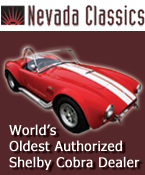I read this and maybe it will help others. I'm going to do slave next weekend due to time allowed but should be no problems with the help I got from here and Vintage Motorsports.
Thanks all to advised.
tom
Brake Fluids
--------------------------------------------------------------------------------
Thanks to Dave Zeckhausen :
Lets look at what the DOT ratings mean. The table below shows the MINIMUM wet and dry boiling points for DOT 2, 3, 4, and 5 brake fluid in degrees fahrenheit.
DOT 2 DOT 3 DOT 4 DOT 5
Dry Boiling point 374 401 446 500
Wet boiling point 284 311 356
The DOT 2 spec is for drum brakes and is obsolete. If you have any DOT 2 in your garage, throw it away! DOT 5 is for silicone brake fluid. Silicone brake fluid (DOT 5) should be avoided because it is not compatible with regular brake fluid, it is hard to pour without introducing bubbles and thus results in soft pedal feel, and moisture still gets into your system and will pool in low areas like your calipers and encourage rapid corrosion. STAY AWAY!
That leaves DOT 3 and DOT 4 fluids. These fluids are compatible with each other and may be interchanged or mixed with no ill effects.
Let's look at some popular brake fluids and their boiling points:
Fluid DRY WET
Castrol LMA DOT 3/4 446 311
Ford Heavy Duty DOT 3 550 290
ATE Super Blue Racing 536 392
ATE TYP 200 536 392
Motul Racing 600 585 421
Castrol SRF 590 518
Performance Friction 550 284
Castrol LMA is very good at rejecting moisture and may be kept in your brake system for a couple years. The LMA stands for "Low Moisture Activity". This is the minimum quality stuff that I would use in my Impala. It comes in plastic containers which do not have a long shelf life. Don't buy lots of this stuff at a time because moisture can make its way through the plastic containers.
Ford Heavy Duty DOT 3 is VERY inexpensive and is popular among racers because of its excellent dry boiling point. It absorbs moisture quickly, but the racers don't care since they change their fluid frequently. Comes in metal cans so it may be stored. I would not use this in my Impala for the street.
ATE Super Blue Racing and ATE TYP 200 are the same brake fluid in two different colors (blue and amber, respectively). BMW recommends this brake fluid for their street cars because it, like Castrol LMA, absorbs moisture very slowly. The advantage over LMA is that ATE has a much better wet boiling point. You can put this stuff in your car and forget about it for a long time. An excellent choice for a weekend track car which also sees regular street duty. Comes in metal cans. This is what I use in all my street cars.
Motul Racing 600 is a very exotic and expensive
synthetic fluid with high wet and dry boiling points. I use this exclusively in my race cars. Too expensive for the street and requires frequent changing due to its hygroscopic nature. Sold in plastic bottles. It is not suitable for the street because it absorbs moisture quickly.
Castrol SRF is a hyper-exotic and hyper-expensive brake fluid that is generally used by wealthy Porsche owners at track events. I've seen prices of $78 per liter for this stuff. Sold in metal cans. I can't afford this stuff!
Performance Friction High Performance DOT 3 has a good dry boiling point but a crummy wet boiling point. It comes in metal cans which is good for shelf life and sells for $7.87 per 16 ounce container. If you are even considering this fluid, I would go with the cheaper Ford Heavy Duty DOT 3. In either case, change this fluid frequently due to the poor wet boiling point.
--------------------------------------------------------------------------------
Thanks to Leigh Smith for the following information on the impact of moisture content in brake fluid :
The amount of moisture in brake fluid definitely affects its performance. The big problem is it is absorbs moisture quickly. Over a relatively short period of time brake fluid will absorb moisture from the air. SAE field tests have shown that the average one year old car has 2% moisture in the fluid. A random test of vehicles in the U.S. showed an average water content of 2.6% for vehicles with an average age of 8 years. And 25% of these vehicles had water content greater than 4%.
As water content in brake fluid increases over time, the boiling point decreases. Fluid with a reduced boiling point (or high water content) can create vapor by boiling in the caliper, or wheel cylinder. The result is sudden brake failure. And water in the brake fluid can contribute to corrosion of parts such as steel pistons and ABS modulators.
The end result is even though DOT 3 fluid is "rated" at greater than 401oF, in the typical 3 to 4 year old car with 3 to 4% moisture content, it could boil under 300oF. And if it has got more than 4% moisture, you may as well be running straight water!
Moral: Flush your brake fluid every year or so. But only if you would like it to work well scarcely an inch away from those toasty 500oF rotors on your SHO during a couple of hard stops! Or would you rather have a squishy pedal?
Technical data courtesy of Leica Refractometers.
www.leica-ead.com.


